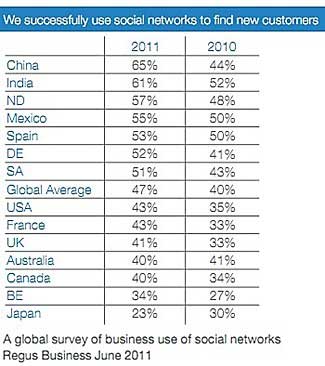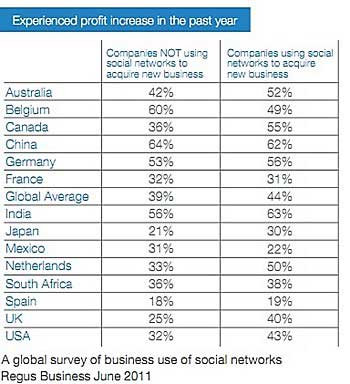Social Media and Viral Marketing
Intelligent Mix
In 2006, Unilever launched a
campaign titled 'Evolution' for its brand Dove. The campaign was at the core of
the brand's 'Real Beauty' initiative to promote the Dove Self-esteem Fund and
expose distorted perceptions of beauty. Quite a lofty goal but the film went
viral and emerged as a telly commercial. It was written about extensively and won
plenty of awards.
In 2007 Dove Evolution bagged
one of the most keenly contested gongs in the business; the Grand Prix at the
Cannes Lions festival. Around the same time, another commercial, of Indian
origin, was turning heads. It was heavily favoured in the run-up to Cannes
Lions for at least a gold. Today, six years later, Dove's commercial is still
clocking hits on YouTube - last count: over 14 million - and is case-study
material. The Happydent commercial in the meantime hasn't quite breached the
300,000 mark, though it remains the best work for the brand in the country to
date. Online advertising, social media, (facebook, YouTube and the like), viral
marketing, microsites and PR via blogs and tweets can help extend the life of a
campaign. For the past three years Indian audiences have been in a love affair
with wiry creatures with swollen bellies and cackles that could drown out the
sound of war horns. This year might witness the fourth avatar of the Vodafone
Zoozoos when the next season of the Indian Premier League kicks off. Similarly,
in 2008, Jaago Re, Tata Tea's campaign to stir up the youth, began with a
simple idea[1].
The
Internet has created a whole new strata of stars: those who find fame and
fortune through YouTube. Every day millions of videos, often featuring the most
inane things, like hit song covers and jumping cats are uploaded on to the
video sharing site. A few of them manage to really capture the collective
imagination of the Internet. These get shared, reshared, highlighted, picked up
by mainstream media and lo and behold! More often than not, a star is born.
India had its own viral video sensation in 2011 with Dhanush’s Kolaveri di
in November, and of course there was the Govind Tiwari phenomenon that took
over Indian social media real estate in July. [2].
The
Indian Institutes of Management (IIMs) are treating the popular song Kolaveri
Di from an upcoming Tamil film '3' as a classic example of viral marketing.
IIM Ahmedabad (IIM-A), for instance, plans to dedicate a session to Kolaveri Di as part of its course on Contemporary Film Industry: A business perspective. Bharathan Kandaswamy, faculty and co-ordinator of the course, says, "I will discuss Kolaveri Di as part of a session on social media and online tools when my class starts in December. Kolaveri Di is a perfect case of viral marketing, which has created a huge difference in the world of publicity."[3]
IIM Ahmedabad (IIM-A), for instance, plans to dedicate a session to Kolaveri Di as part of its course on Contemporary Film Industry: A business perspective. Bharathan Kandaswamy, faculty and co-ordinator of the course, says, "I will discuss Kolaveri Di as part of a session on social media and online tools when my class starts in December. Kolaveri Di is a perfect case of viral marketing, which has created a huge difference in the world of publicity."[3]
The
soup song from the Tamil film 3 starring Dhanush and Shruti Haasan has not only
crossed 30 million hits online, but has also become a subject of academic
research at premier institutes. The buzz began when the rough version of the
song leaked online. The composer of Kolaveri, Anirudh Ravichander, and Dhanush
decided to cash in on the opportunity and release an official video of the
making of the song on November 16. It surpassed many previous records,
including those set by chartbusters like Munni Badnaam Hui and Sheila Ki
Jawaani, and made Dhanush the darling of the nation. Dhanush is also making the
Hindi version of Kolaveri, as well as remixed and jazz versions [4].
Sony
Music Entertainment India, which recorded the Tamil-English song that has
become an international YouTube hit, filed for trademark registration of
"Why this kolaveri di".Trademark registration under Class 9 and Class
41 will allow Sony to launch products such as compact disks, cassettes and SD
cards as well as film and non-film entertainment content and talent discovery
programmes branded "why this kolaveri di" and, more importantly,
restrict others from doing it.
While
the original song has received a never-before 20 million hits on YouTube, tens
of different versions of the song in several languages are coming up everyday
from across the globe. "This song cuts across demographics and
psychographics--from the rickshaw wallahs on the street to CEOs, all find the
product entertaining [5].
Adding
to this, Bharti Airtel is extending its ‘Har Friend Zaroori Hai, Yaar' (HFZ)
campaign by launching an all-new online viral initiative at its YouTube
channel. Created by Taproot, these 20 videos are inspired by interesting
‘friend types' or tags created in a brand activity on Facebook[6].
Many impressive social marketing
happenings took place in 2011[7]. There is a marked rise in use of social media
by businesses worldwide as a tool to win new business, a recent study has
found. An increasing number of Indian companies are using social media as an
effective business tool, the study said, adding that 83 per cent firms in India
agree that without social media activity, marketing strategies cannot hope to
be successful [8]. While 83 per cent of Indian firms feel they cannot do without
social media activity, the global figure for the same finds 74 per cent of
companies around the world in agreement with it. In India, 67 per cent of firms
encourage their employees to join social networks such as Linkedin, Xing and
Video, compared to 53 per cent globally [9]. “From supply chain management, to
leaner working practices, to cloud computing, to increased use of video
communications and mobile working, no area of business is being overlooked.
Particularly in India, where Nielsen has reported that three out of four social
media users visit a social networking site at least once a day, and a
discussion forum once a week; more and more companies are leveraging this
channel to increase the loyalty of existing customers, and as a successful acquisition
tool,”[10].
The global Regus survey findings are
based on the responses of over 17,000 managers and business owners across 80
countries. According to the survey, the last year has seen a rise in Indian
companies using social networks, blogs, micro-blogs and forums to win new
business. In 2010 Regus found that 52 per cent of Indian firms were
successfully winning new customers through business social networking activity.
A year later, the proportion has risen to 61 per cent. The research also
reveals that globally more firms are also using social media to connect and
engage with existing customers than a year ago.
The study observed that there is a rise of 7 per cent in the proportion
of businesses successfully recruiting new customers through social networks
such as Facebook, while 52 percent of businesses globally and 64 per cent in
India use websites such as Twitter and Weibo to engage, connect with and inform
existing customers. In India 67 per cent firms encourage their employees to
join social networks such as Linkedin, Xing and Video, compared to 53 per cent
globally.
The
phenomenon of Social Media Marketing is reaping benefits for Indian Brands in
both Branding and Customer Acquisition perspectives. The Marketing Chiefs are
excited to include Social Media Marketing into their Mainstream marketing
Campaigns. Majority of Indian Brands has a presence in Facebook and Twitter.
Social Media Marketing in India should blend Indian Culture in their creative
mix, while engaging with their customers in Facebook or Twitter. This would
enable the brand to cater to the localized preferences and tastes of their
customers with whom they are engaging.
Source: http://i.marketingprofs.com/assets/images/daily-data-point/finding-new-customers-via-social-media-regus.jpg
Source: http://regusonline.net/social_media_imagery/Blogs/2011/06_jun/regus.jpg
Source: http://i.marketingprofs.com/assets/images/daily-data-point/profit-increases-among-social-media-users-regus-new.jpg



nice blog its unique
ReplyDelete